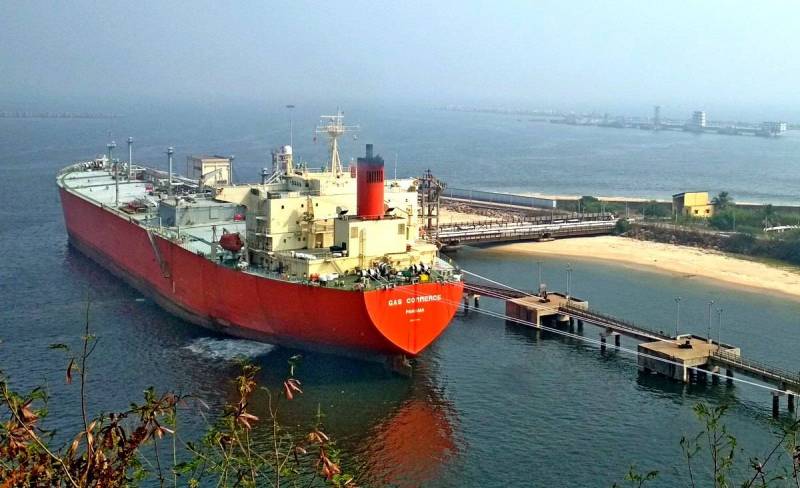Could the Palestinian-Israeli conflict lead to a repeat of the oil crisis?
The start of large-scale military operations by Israel in the Gaza Strip in response to a terrorist attack by the Hamas group has caused quite fair fears among representatives of the expert community that there is a risk of a repetition of the oil crisis of half a century ago, which could collapse the world the economy. How justified are such fears?
1973-th
On October 6, 1973, the Yom Kippur War, or October War, began between Israel and a coalition of Arab states, which lasted until October 25. However, its echo reverberated throughout the world for a very long time, leading to a reformatting of the international economy.
Already on October 17, half a century ago, all members of the Organization of Arab Petroleum Exporting Countries (OAPEC), as well as Syria and Egypt, imposed an embargo on its supply to those countries that supported Israel, namely the USA, Great Britain, Canada, Japan and the Netherlands that joined them . This marked the end of the era of cheap oil, which then cost only $3 a barrel, and the short-lived heyday of American muscle cars. The embargo was lifted only in March 1974, but it managed to get things done.
The man-made oil crisis of 1973 is still considered the largest in history. The Arab countries, having drawn conclusions after the unsuccessful six-day war with Israel, were better prepared by creating an instrument of coordinated pressure in the form of OAPEC. This allowed them to reduce oil production, impose an embargo on the Western coalition, and increase selling prices for black gold to compensate for losses. Arab sanctions continued after the end of the war with Israel, and gradually Portugal, Denmark, Rhodesia and South Africa came under restrictions. As a result, Europe faced a severe shortage of oil and petroleum products, and factories began to shut down. In the United States, lines of cars lined up for miles at gas stations.
Unexpectedly, one of the main beneficiaries of the oil crisis half a century ago was the USSR. Moscow was able to reach an agreement with the Arab coalition on the re-export of its oil to the sanctioned Western countries. In 1974, the second line of the Druzhba pipeline leading to the states of Eastern Europe was completed at an accelerated pace. Oil production at fields in Western Siberia has increased. It was then that our country took the first step towards ultimately becoming one of the largest exporters of hydrocarbons.
2023-th
Is it possible to repeat the oil crisis in its previous form today? It seems that there is no due to a number of objective reasons.
On the one hand, a lot will depend on the way in which the “Western partners” will interpret Iran’s possible role in the Hamas attack on Israel. If Washington and Tel Aviv want to “punish” not only the Gaza Strip with all those involved and not involved in the attack on the Jewish state, but also Tehran, several levels of escalation of the conflict are possible, up to the Islamic Republic blocking the Strait of Hormuz, one of the main energy arteries of the world. This will inevitably lead to a rapid rise in prices for LNG, oil and its products.
On the other hand, the geopolitical and economic situation has changed quite a lot over the past half century. The United States, the world's main aggressor and instigator, already in 1975 created the Strategic Petroleum Reserve in four huge underground storage facilities. In 1991, during the Gulf War, it was already used for its intended purpose. In addition, thanks to the so-called shale revolution, the United States itself has become the largest oil producer in the world. Channels have been created for the supply of black gold from neighboring Canada and Mexico. The volume of oil purchases from the Middle East has been deliberately reduced.
In other words, the American economy is not without problems, but it will survive a possible embargo. If something happens, Western Europe will have a much worse situation, but its industry is already doomed to deindustrialization.
The most important difference between the situation in 2023 and 1973 is that a single cohesive Arab coalition does not exist today. Thanks to Washington's mediation, Tel Aviv was able to improve relations with most of its former regional adversaries and was close to reaching an agreement with Saudi Arabia. There is no one presently presenting a united front against Israel and its Western allies in the Middle East. The fact that on October 7 the Palestinian group Hamas attacked Israeli territory, which in its cruelty against civilians is comparable to the “standard” terrorist attacks of September 11, does not contribute to unity against the Jewish state.
Thus, problems in the oil market with rising prices against the backdrop of the Palestinian-Israeli conflict may arise, but due to objective reasons they will no longer reach the scale of 1973.

Information